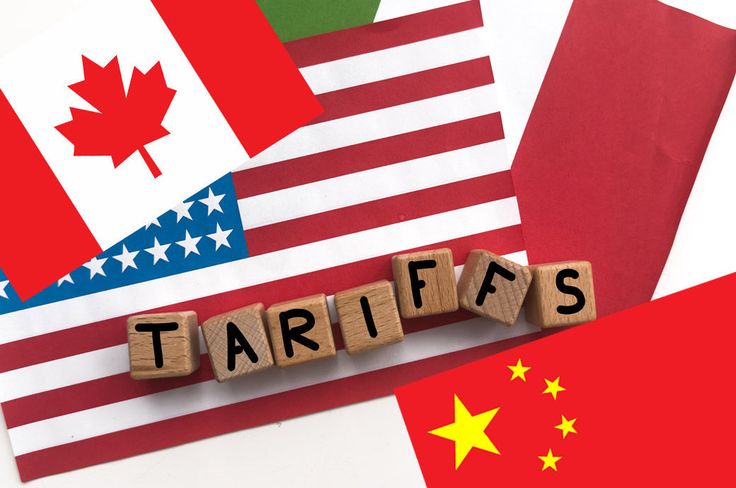How U.S. Tariffs in 2025 Are Shaking the Global Economy
Introduction
In 2025, U.S. tariffs have once again taken center stage in global economic discussions. With new measures targeting Chinese electric vehicles, steel, aluminum, and semiconductor imports, the United States is signaling a stronger commitment to economic protectionism and national security. While tariffs are often discussed in terms of domestic gains and political wins, their impact extends far beyond U.S. borders. This blog delves into the far-reaching consequences of U.S. tariffs on the global economy, exploring the economic, political, and social implications around the world.
Understanding Tariffs Tariffs are essentially taxes imposed by a government on imported goods. They are used to increase the price of foreign products, thereby making domestically produced alternatives more competitive. While the intent is often to protect local industries, encourage job creation, and reduce trade deficits, tariffs can also lead to retaliatory actions, increased production costs, and supply chain disruptions.
Current Context: Why U.S. Tariffs Are in the Spotlight Again In early 2025, the Biden administration announced a new wave of tariffs, particularly targeting Chinese imports. These include:
- Increased tariffs on Chinese electric vehicles (EVs)
- New levies on steel and aluminum
- Tariffs on semiconductors and green energy components
These moves are justified on grounds of national security, unfair trade practices, and the need to bolster domestic manufacturing. They are also a continuation of a broader trend towards economic nationalism, influenced heavily by political pressures and strategic competition with China.
Economic Impacts Across the Globe
- Global Supply Chain Disruptions U.S. tariffs often lead to a domino effect in global supply chains. Many modern industries rely on complex international supply networks. When tariffs are imposed, the cost of components sourced from affected countries rises, forcing manufacturers to seek alternatives, absorb the cost, or pass it on to consumers. Example: A tariff on Chinese semiconductors affects electronics manufacturers in South Korea, Taiwan, Germany, and beyond, increasing global production costs.
- Inflationary Pressures Worldwide As tariffs increase production costs, prices of finished goods also rise. This can contribute to inflation, not just in the U.S., but globally, particularly in economies that are tightly integrated with American markets or rely heavily on U.S. imports. Example: European and Latin American countries importing U.S.-made cars or electronics may see price hikes due to upstream cost increases from tariffs.
- Trade Retaliation and Escalation When the U.S. imposes tariffs, other countries often respond with their own, leading to trade wars that hurt all sides. This tit-for-tat approach creates uncertainty and reduces trade volumes. Example: China may retaliate with tariffs on American agricultural products, affecting farmers in the Midwest and increasing food prices in countries reliant on U.S. exports.
- Shifts in Global Trade Alliances As the U.S. becomes more protectionist, countries look elsewhere for stable trade partners. This can lead to the strengthening of regional trade blocs like the European Union, ASEAN, or new bilateral agreements between countries seeking to bypass U.S. tariffs. Example: The EU and China may deepen economic ties, or Latin American countries may increase trade within the region to reduce dependence on the U.S.
- Emerging Markets and Developing Economies Developing countries often feel the brunt of global economic shifts. Tariffs that disrupt major markets can lead to reduced demand for raw materials, lowered investment, and economic instability in export-dependent economies. Example: A decline in Chinese manufacturing due to U.S. tariffs can reduce demand for raw materials from Africa and South America.
Political and Social Implications
- Strained International Relations U.S. tariffs are often viewed as unilateral and aggressive moves, leading to diplomatic tensions. Allies and adversaries alike may perceive them as a breach of trade norms, potentially undermining multilateral institutions like the World Trade Organization (WTO).
- Rise of Economic Nationalism The U.S.’s shift towards protectionism can embolden similar movements globally. Countries may adopt their own tariffs and subsidies, leading to a fragmented global trade system. Example: India, Brazil, and other large economies may increase tariffs on imports to protect local industries, leading to global inefficiencies.
- Social Discontent and Inequality While tariffs aim to protect jobs, they can also lead to higher consumer prices and reduced access to goods. In countries heavily reliant on imports, this can exacerbate social inequality and trigger public unrest. Example: Increased costs of technology or energy components may affect lower-income households disproportionately, both in the U.S. and abroad.
Sector-Specific Impacts
- Technology Tariffs on semiconductors and electronics components hinder the tech industry’s growth, which relies heavily on global collaboration. Delays, shortages, and increased costs can stall innovation.
- Automotive Tariffs on electric vehicles and parts disrupt efforts to transition to clean energy. Countries looking to expand EV adoption may face higher costs and slower deployment.
- Agriculture Retaliatory tariffs often target U.S. agricultural exports, hurting farmers and increasing global food prices. Developing nations with food security issues are especially vulnerable.
- Green Energy Tariffs on solar panels, wind turbines, and batteries complicate climate goals by increasing the cost of clean energy technologies.
Looking Ahead: What the Future Might Hold
- Reshoring and Friendshoring In response to tariffs, companies may relocate production back to the U.S. or to allied countries (friendshoring). While this may reduce dependence on geopolitical rivals, it could increase costs and limit efficiency.
- Technological Decoupling The tech industry may see a greater divide between U.S.- and China-led ecosystems, with separate standards, supply chains, and platforms.
- New Trade Agreements To counterbalance tariffs, countries may pursue new trade deals. The U.S. may also engage in more bilateral agreements to secure critical supply chains without full dependence on traditional trade pacts.
- Global Economic Slowdown If tariff wars escalate, the resulting slowdown in trade could dampen global growth. The IMF and World Bank have warned that prolonged protectionism could lead to a long-term drag on productivity and innovation.
On final Note
U.S. tariffs may serve immediate political and strategic goals, but their consequences reverberate around the world. From disrupting supply chains and fueling inflation to altering geopolitical alliances and triggering social unrest, the global impact of American protectionism is profound. As the world navigates these turbulent waters, cooperation, adaptability, and innovative trade solutions will be crucial to mitigating the risks and ensuring shared prosperity.
In an interconnected world, no tariff is ever truly local. The ripple effects are global, and understanding them is the first step toward building a more resilient and equitable economic future.


